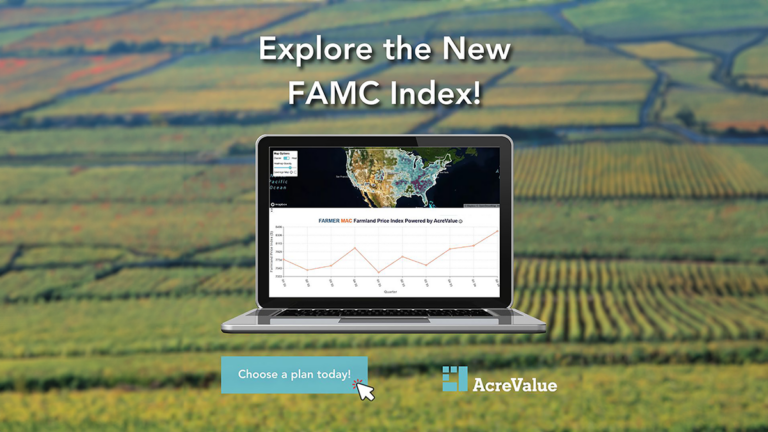In May 1917, W.S. and Mary Smith of Grayson County, Texas, became the first Farm Credit borrowers in the state when they refinanced a $10,000 farm loan at 5 percent interest with the newly formed Van Alstyne National Farm Loan Association – now a part of Lone Star Ag Credit.
Their new interest rate was a vast improvement over the 8 percent they had been paying on a bank note. Back then, lenders didn’t offer a choice of rates and terms. Until banking laws were changed and the Farm Credit System was established in 1916, long-term land loans were not available.
Rural real estate financing has changed dramatically since then. Today, as the Farm Credit System marks its 100th anniversary of supporting agriculture and rural communities, country home and land buyers have dozens of financing options. Whether you are purchasing or selling property, it helps to know the lending lingo. Following are a few terms used in rural financing today.
Appraisal – A written opinion of a property’s current market value prepared by a qualified appraiser.
Balloon Note – A long-term loan, often a mortgage, that has one large payment (the balloon payment) due upon maturity. A bal-loon note often has the advantage of low payments, thus requiring very little capital outlay during the life of the loan.
Basis Point – Basis points measure the movement of interest rates or yields in hundredths of a percent. One basis point is 0.01 per-cent, thus 100 basis points equal one percent.
Closing Costs – Costs for services required to close a mortgage loan, such as title insurance, inspections, appraisals, loan closing fees and attorney’s fees.
Closing Disclosure – A five-page form that provides final details about the mortgage loan that the applicant has selected. It explains loan terms, projected monthly payments and total closing costs. The lender must provide the closing disclosure to the applicant at least three business days before the loan closing date.
Cooperative Lender – A lender that is owned and controlled by its customers. Each member has one vote. An example is a Farm Credit financing cooperative.
EIR (Effective Interest Rate) – Similar to the consumer APR, or annual percentage rate, the effective interest rate is an expres-sion of a customer’s total cost of borrowing in the first 12 months of a loan, including stock purchase, origination fees and interest, expressed as an interest rate.
Fixed-Rate Loan – A loan in which the interest rate is fixed for a pre-established time frame. The fixed-rate period can run for the full term of the loan, or for a period shorter than the full term.
Flood Determination – A process whereby a lending institution determines whether flood insurance is required and available for a loan secured by a building or mobile home.
Inspection – An inspection of a prospective home or structure done by a professional to establish the structural and mechanical integrity of the building.
LIBOR (London Interbank Offered Rate) – The interest rate that international banks charge each other for short-term inter-bank loans. It is usually quoted for one-, three- and six-month periods, and is a key reference rate used throughout the world financial markets. LIBOR is typically used as the base index for short-term loans and adjustable-rate mortgages. LIBOR rates are published daily in the Wall Street Journal.
Loan Estimate – A three-page form that the lender is required to provide to the loan applicant within three business days of receiving the mortgage application. It explains the important details about the loan requested, including estimated interest rate, monthly payment and total closing costs.
Lot Loan – A lot loan is designed for people who wish to finance an unimproved property on which they intend to build a home in the future. Limited agricultural activity may occur on the property, but no intensive farming.
One-Time Close – Saves closing costs by combining your land loan, interim construction financing and permanent mortgage loan into one package.
Patronage – The portion of a cooperative’s annual earnings, after payment of all operating expenses, that are distributed to the cooperative’s members on a pro rata basis. Patronage dividends are a unique economic feature of cooperatives. They are paid in cash, allocated equities, stock or any combination of these, and effec-tively lower the cost of borrowing from a cooperative.
Preapproval – A general term that means a borrower has com-pleted a loan application and has provided his or her debt, income and savings information, which an underwriter has reviewed and approved prior to an actual transaction.
Prequalification – A preliminary step in the loan application pro-cess, a prequalification is a lender’s written opinion of the ability of the borrower to qualify for a particular loan amount. The amount prequalified by the lender is determined based on inquiries into the borrower’s credit history, debt, income and savings.
Prime Rate – A short-term, variable interest rate quoted by com-mercial banks as an indication of the rate being charged on loans to its best commercial customers. Even though banks frequently charge more and sometimes less than the quoted prime rate, it is a benchmark against which other variable rates are measured.
Rate Lock – An option exercised by the borrower, at the time of the loan application or later, to “lock in” the rates and points prevailing in the market at that time. The lender and borrower are committed to those terms, regardless of what happens between that point and the established closing date.
Stock – Each Farm Credit co-op borrower becomes an owner of the cooperative through the purchase of stock equal to 2 percent of his or her loan amount, not to exceed $1,000. In most cases, funds for the stock can be included in the loan. Ownership of this stock gives borrowers voting rights in the co-op. The stock invest-ment is repaid to the borrower when the loan is paid in full.
Variable-Rate Loan – Refers to any type of loan that does not have a fixed rate of interest over the life of the loan. Such a loan is adjusted periodically, usually according to changes in a standard index rate outside the control of the lender, such as the prime rate, LIBOR or Treasury bonds or notes.


